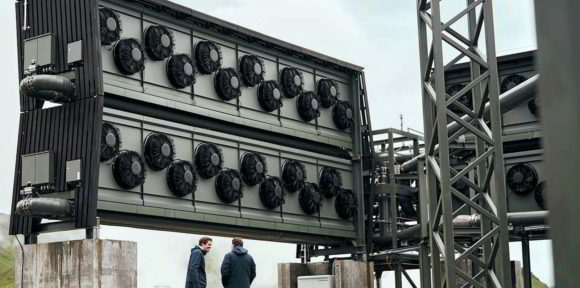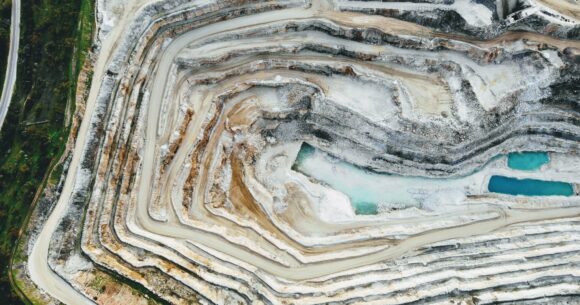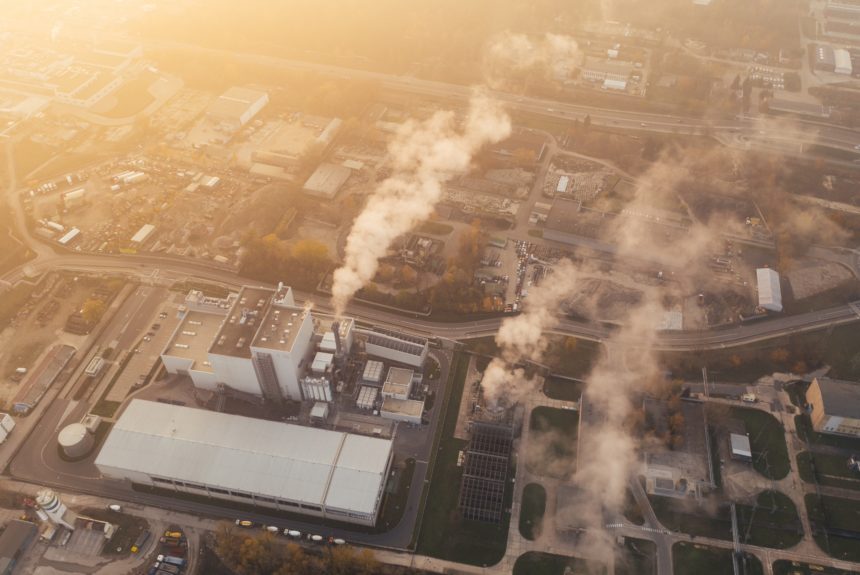With breakthroughs in nuclear fusion and direct air capture, 2023 was an exciting year for advancements in clean energy technologies progress. Last year was also the warmest on record, drawing attention to the need to reduce emissions in an economically viable way. As 2024 begins, the private sector and public research are gearing up to unleash a suite of breakthrough energy and climate solutions. Here are three that are set to have a big year.
1. Carbon Removal: Unleashing the Power of Carbon Dioxide Removal (CDR) Innovation

Last year, the Department of Energy committed $1.2 billion to fund two Direct Air Capture (DAC) hubs in Louisiana and Texas. Unlike carbon capture which captures CO2 at the point of emissions, DAC technologies extract carbon dioxide from the atmosphere with either liquid solvents (systems that pass air through chemicals that remove the CO2) or solid sorbents (physical filters). The hubs in Louisiana and Texas will sequester 1 million tons of CO2 annually, marking a monumental stride in advancing the technology.
>>>READ: Cement Has a Major Carbon Problem. AI Can Help.
The private sector is looking to capitalize on this progress in the new year. According to CDR.fyi, a platform dedicated to carbon removal insights, CDR buyers are planning to allocate an impressive $100 million for CDR in 2024. The Bezos Earth Fund recently pledged $1 million towards innovative CDR technologies and policy solutions. This infusion of private capital is expected to accelerate the development and deployment of groundbreaking carbon removal technologies.
Importantly, the private sector is also creating solutions to address a problem that has crippled the carbon removal (both CDR and carbon markets) industry: Monitoring, Reporting, and Verification (MRV). Andes, an agricultural CDR startup, has introduced a methodology to measure its microbial carbon mineralization (MCM), a process that uses microorganisms to permanently remove carbon dioxide from the atmosphere. These microorganisms are added to the soil of corn or wheat and as those plants grow, the microorganisms grow on the plant’s roots and accelerate the natural carbon conversion already happening. The blueprint that has been developed allows for the quantification and accreditation of MCM, enabling independent auditing and verification of carbon credits by third parties.
2. Advanced Nuclear: Powering Up for the Future

After a promising start to 2023, which saw the Nuclear Regulatory Commission (NRC) certify its first advanced reactor design, the advanced nuclear industry faced challenges toward the end of last year with NuScale canceling its groundbreaking advanced nuclear project in Idaho due to increased costs. Despite setbacks, the industry is showing resilience.
X-energy, undeterred by these challenges, is moving forward in its collaboration with Dow Energy to deploy its Xe-100 small modular reactor at Dow’s seadrift site. The company is also partnering with Energy Northwest to bring 12 of its SMRs online in Washington state. With pre-licensing completed in Canada, X-energy is overcoming hurdles to bring its technology to our neighbors to the north.
>>>READ: Andes Offers Farmers a Way to Increase Yields, Reduce Emissions
In December, the NRC approved Kairos Power’s Hermes reactor, the first Non-Water-Cooled Reactor in over 50 years. While most reactors use water as a coolant, the Hermes reactor uses molten fluoride salt which offers more chemical stability and passive safety features than boiling water reactors (which are already safe). Molten salt reactors are also able to maintain their structural integrity at higher temperatures, which gives Hermes the ability to transfer heat to power industrial processes like cement or steel making.
3. Critical Minerals: Redefining Resource Independence

China’s announcement in December to ban exports of rare earth extraction and separation technologies has prompted urgency in diversifying critical mineral supply chains. Thankfully, new discoveries and private sector innovation are helping the U.S. create a more secure critical mineral supply chain.
Two significant discoveries last year could kick off greater use of domestically-sourced critical minerals in 2024. A coal mine in Sheridan, Wyoming, contains an estimated 1.1 million metric tons of rare earth oxides, valued at $37 billion. In September, a lithium deposit near the Nevada-Oregon border was discovered to have 40 million metric tons of lithium, valued at a staggering $1.5 trillion. While these discoveries are impactful, they will ultimately prove to be disappointing without meaningful reforms to the regulatory process for mining and extraction.
Meanwhile, Redwood Materials, founded by Tesla co-founder JB Straubel, is making waves by recycling minerals from old lithium-ion batteries to produce new ones. The company’s new facility in Charleston, SC, which will begin accepting live battery cells this year, is expected to employ 1,500 people within the next decade.
As we step into 2024, these three climate solutions – carbon removal, advanced nuclear, and critical minerals – are ready to create pathways to lower emissions and promote economic development.
The views and opinions expressed are those of the author’s and do not necessarily reflect the official policy or position of C3.
